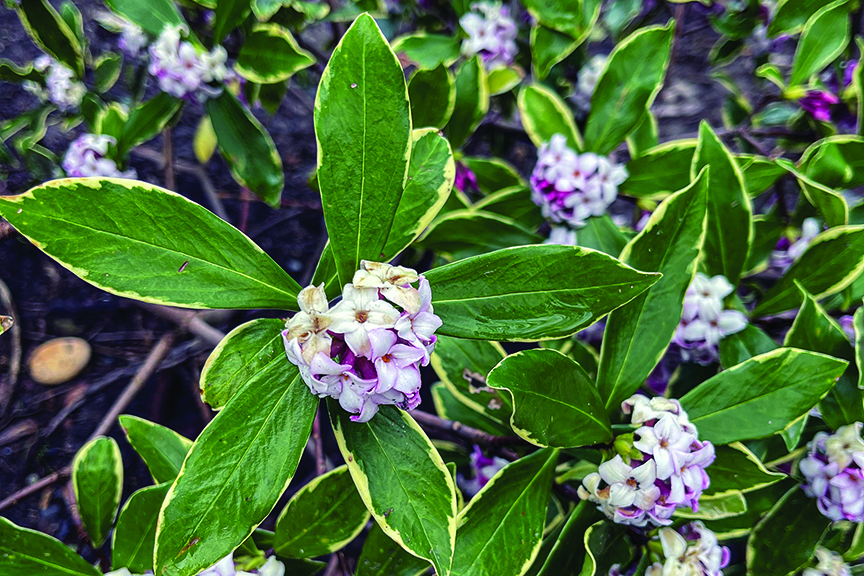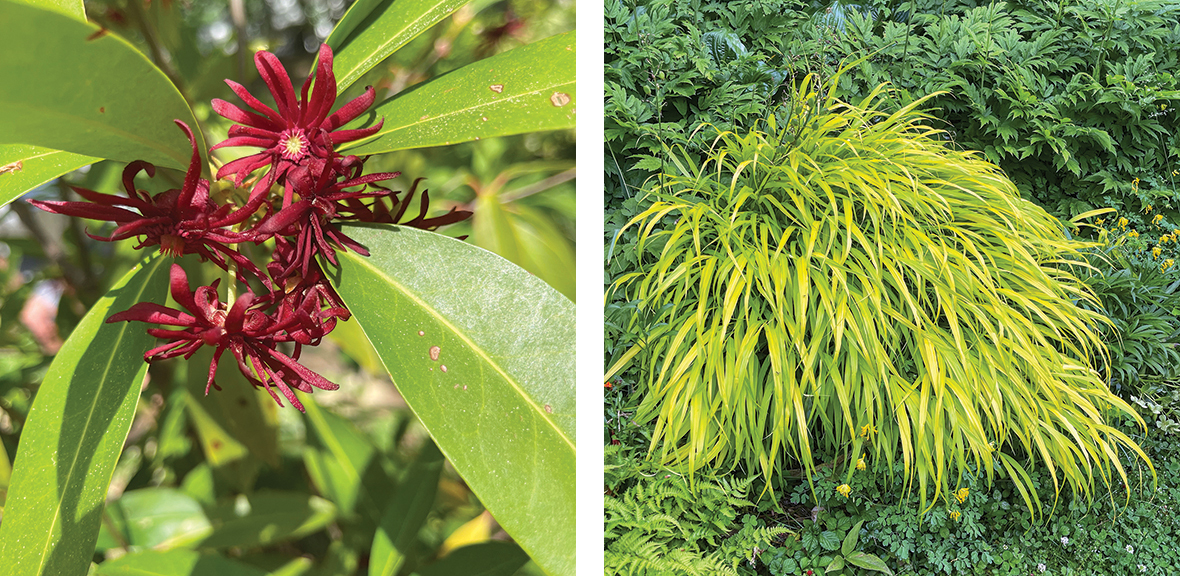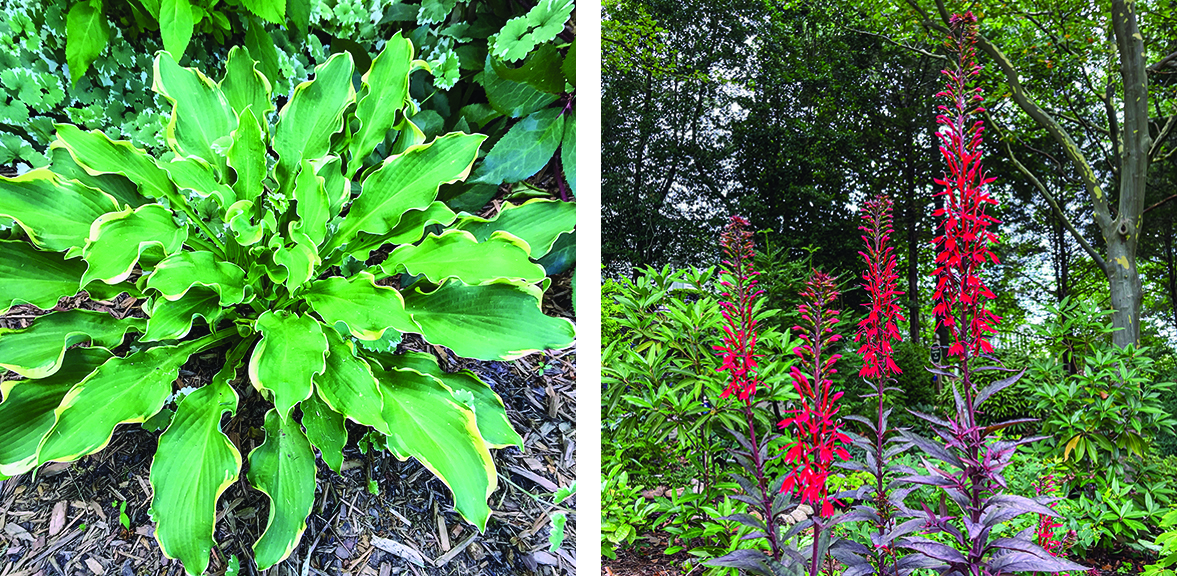Gardening in cool, calm spaces offers unexpected beauty
October 2025

Daphne odora ‘Aureomarginata’ has fragrant winter flowers that smell like Fruit Loops. (photos courtesy Scott Burrell)
by Beth Burrell, Contributing Columnist
One of the most common questions I hear is, “What can I plant in the shade?” There are actually far more shade-loving plants than many people realize. In fact, shady spots can be some of the most rewarding areas to cultivate. With tall canopy trees above, shade gardens evoke a more intimate, tranquil atmosphere.
WINTER BLOOMS AND FRAGRANT FOLIAGE
Daphne odora ‘Aureomarginata’ (winter daphne) is an outstanding choice for dry shade. This compact, evergreen shrub produces sweet, fruity-scented blooms in March — an early highlight in the garden. Even when not in bloom, its striking green and gold variegated leaves provide year-round interest. Native to China and Japan, winter daphne is slow growing, eventually reaching 3 to 4 feet in both height and width.
Edgeworthia chrysantha, or paper bush, is a close relative of daphne and blooms just a few weeks later. Native to the Himalayas, this plant gets its common name from its traditional use in Japanese papermaking, including the production of banknotes. Clusters of yellow, fragrant flowers appear on bare stems in late winter, exuding a light gardenia-like scent. After flowering, its bluish-green leaves with silvery undertones give it a rhododendron-like appearance. Over time, it can grow to a height of 5 feet or more and spread up to 6 feet wide.
Illicium ‘Woodland Ruby,’ a cross of the native anise tree and Illicium mexicanum, offers both beauty and practicality. It produces larger, more striking purple-red flowers in spring and again in fall. Its glossy, evergreen leaves have a distinct anise scent, and the entire plant is toxic — making it naturally deer-resistant. A moderate grower, it can reach 6 feet or more, making it ideal as a screen or a standout specimen.

Illicium ‘Woodland Ruby’ blooms in the spring and again in the fall, with larger flowers. RIGHT: Golden Japanese forest grass thrives in the shade, adding brightness to the forest floor.
GRASSES AND GROUNDCOVERS THAT SHINE IN SHADE
Golden Japanese forest grass (Hakonechloa macra ‘Aureola’) brings graceful texture and vibrant color to shady areas. Unlike most grasses, it thrives in partial to full shade, forming low, cascading mounds of narrow golden foliage. It’s especially effective if planted along paths or borders where its luminous color stands out.
Of course, hostas are the quintessential shade plants, with thousands of cultivars to explore. One especially whimsical variety is hosta ‘Wheee!’ It is a mid-sized cultivar with narrow, rippled leaves and wavy petioles. Growing to about 15 inches tall, it adds a playful, sculptural element to garden beds or containers.

The whimsical wavy foliage of hosta ‘Wheee!’ will make you look twice at this happy perennial. RIGHT: No shade garden should be without Lobelia cardinalis ‘Black Truffle.’ Its dramatic burgundy foliage and fire-engine-red flowers are a showstopper in late summer.
BOLD COLOR AND POLLINATOR POWER
If you’re looking for a plant with both dramatic foliage and brilliant flowers, try Lobelia cardinalis ‘Black Truffle.’ This native cultivar features deep burgundy leaves and vivid red flower spikes that attract hummingbirds and butterflies. Ideal for moist, shady borders or naturalized settings, it brings bold contrast, vertical interest and essential pollinator support from mid to late summer.
Whether you’re drawn to unique foliage, fragrant blooms or wildlife-friendly plants, there are plenty of exciting options to transform your shade garden into a serene and colorful retreat. Now, it’s your turn to start the adventure. Seek out some of these uncommon treasures and make your shady space shine.
Beth Burrell holds degrees in landscape design and ornamental horticulture. Her family gardens have been featured on the TV show “Home Grown.”
